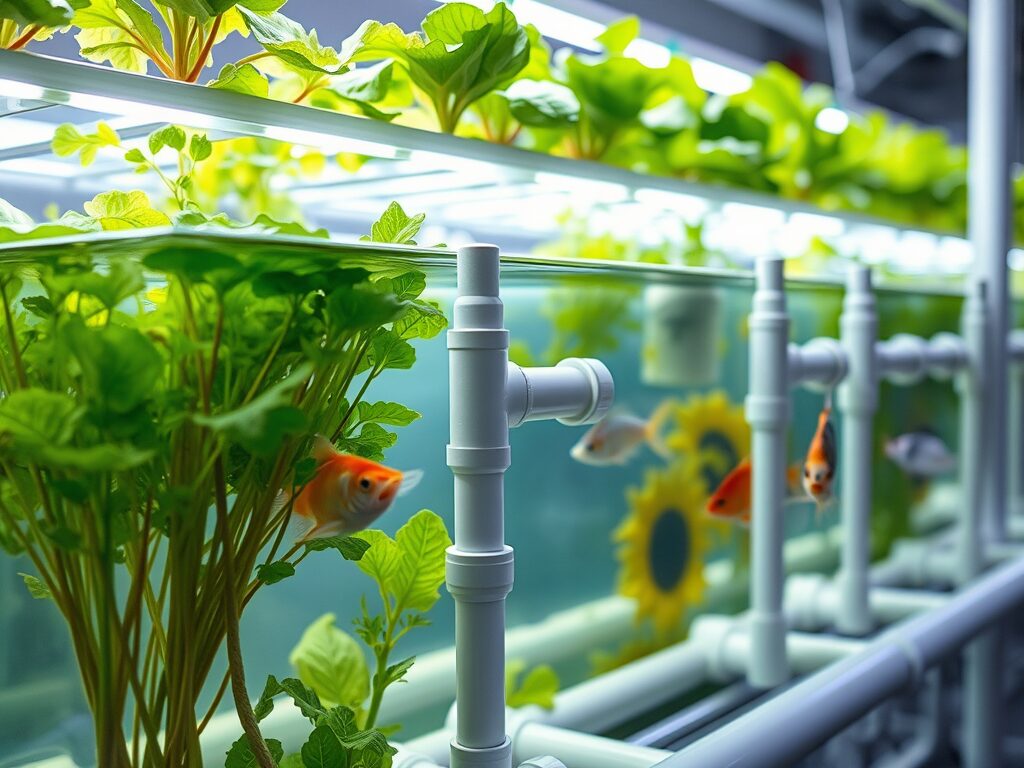What You Need:
- Fish tank: 20-50 gallons, depending on your space and goals.
- Grow bed: For your plants, situated above the tank.
- Water and air pumps: To circulate and oxygenate water.
- Grow medium: Such as clay pebbles or gravel to support plants.
- PVC pipes/tubing: For water flow between the tank and grow bed.
- Fish: Tilapia, goldfish, or catfish are great for beginners.
- Plants: Lettuce, herbs, tomatoes, or similar water-friendly plants.
- pH test kit: Optional, but helpful for monitoring water quality.
- Light source: Natural sunlight or grow lights, especially indoors.
Steps:
- Set Up the Fish Tank:
- Choose a well-lit spot with access to electricity.
- Fill the tank with dechlorinated water.
- Set up the water pump to circulate water between the tank and grow bed.
- Build the Grow Bed:
- Position the grow bed above the fish tank.
- Fill it with a suitable grow medium.
- Use PVC pipes to direct water from the tank to the grow bed, where it can filter back.
- Add Fish and Plants:
- Introduce fish like tilapia or goldfish, which are hardy for beginners.
- Plant water-friendly crops like lettuce or herbs in the grow bed.
- Monitor Water Quality:
- Regularly test pH levels (keep it between 6.8-7.2).
- Check ammonia, nitrate, and nitrite levels, adjusting with buffers or water changes as needed.
- Maintain the System:
- Feed your fish daily and remove uneaten food to prevent water contamination.
- Regularly inspect and clean pumps and other system components.
- Promptly remove dead plants or fish to maintain water quality.
Tips for Success:
- Start Small: Begin with a small system to get the hang of it.
- Compatible Species: Ensure the fish and plants you choose have similar needs.
- Balance Ratios: Too many fish can overwhelm the system, so keep plant and fish ratios in balance.
- Proper Lighting: Ensure plants receive adequate light, especially indoors.
Benefits:
- Sustainable: Aquaponics systems use 90% less water than traditional gardening.
- Space-Efficient: Great for small spaces like backyards or even indoors.
- Organic: No need for chemical fertilizers or pesticides.
- Continuous Harvest: Grow plants year-round with proper care.
Troubleshooting:
- High Ammonia/Nitrite Levels: Reduce feeding and allow beneficial bacteria to stabilize the system.
- Slow Plant Growth: Check the amount of light, water pH, and available nutrients.
- Fish Health Problems: Ensure the water is well-oxygenated and remove sick fish to avoid spreading disease.
By following these steps and tips, you can enjoy a thriving, self-sustaining aquaponics system that provides both fresh produce and fish.

